The name of my blog is Monsters Conquer the World, and this month I’m reviewing Frankenstein Conquers the World. You probably won’t drop your monocle into your brandy in astonishment when I say that Frankenstein Conquers the World is one of my favorite giant monster movies, and with Halloween right around the corner, what better time to talk about this delightfully insane monster mash? That’s right, in Conquers the World, Toho’s Godzilla team gave The Modern Prometheus the full kaiju treatment: an atomic origin story, gigantic size, a city-wide rampage, and damn it, you better believe they found a way to make him fight a man-eating dinosaur at the end! That plot synopsis might sound like word salad, but director Ishiro Honda, suitmation and special effects guru Eiji Tsubaraya, and everybody else associated with the production play it mostly straight, and the whole thing amazingly comes together. We’ll talk about that, the Frankenstein monster’s (sort of) lost battle with a gigantic land-octopus, and the movie’s long road from concept to completion, replete with traditional showbiz backstabbing! So dig up a radioactive monster heart to chow on and keep reading!
I always like to start with the music, so here’s a big sampler of what you’ll hear in Frankenstein Conquers the World. Akira Ifukube is in charge once again, and the results are classic. So classic, in fact, that a big chunk of the score was reused years later for 1972’s Godzilla vs. Gigan.

Gigan is a punk-rock chicken-fish-robot from outer space, because these are the best movies in the universe.
The score is a little less bombastic, and a little more creepy and sinister than what we usually hear from Ifukube monster movie scores. It actually says a lot about the movie and how it compares to Toho’s other creature features. While still gigantic, Frankenstein and Baragon are much smaller than Godzilla and friends. They’re big enough to throw cars and punch through houses, but they’re small enough to creep through the woods at night, snatching up and devouring animals and people alike. Midway through the movie, Frankenstein’s severed hand is crawling around, and Ifukube’s score sounds like something Danny Elfman would have slipped into BeetleJuice. Unlike the skyscraper-toppling titans in Godzilla movies, these monsters are ghoulish marauders with their roots firmly planted in horror; Ifukube’s eerie score never lets you forget that.
And yes, I’m calling him Frankenstein for the rest of the review. I know Frankenstein is the doctor, and the monster was creatively named “the monster” but the characters in this movie call him Frankenstein, you grew up calling him Frankenstein, so I’m gonna call him Frankenstein.
The opening credits pan across shots of beakers, tubes, bunsen burners, gauges, electrodes, and the like: everything you’d want for a classic Frankensteinian laboratory. But you know it’s the 60s because those beakers are full of eye-poppingly bright blues, yellows and reds. Classic gothic horror imagery filtered through garish 60s pop sums up not just the credits, but really the movie as a whole.
After that preview of the mad Dr. Riesendorf’s lab, we get a quick establishing shot of a barren, treacherous European battlefield at the height of World War II. It’s easy to brush it off as a cheap set, but its artificiality is just subtle enough that it actually comes across as more artsy and interpretive to me. It reminds me of the lavishly crafted but thoroughly artificial sets in Kwaidan (a terrific anthology of Japanese ghost stories and folklore Toho released the year before Frankenstein) or Bram Stoker’s Dracula.

The artificiality of some of the effects and miniatures was great and created a surreal atmosphere. The artificiality of other things… not so much.
In a dialogue-free sequence, a couple Nazis bust into the doc’s lab, heil Hilter, and click their heels together so loudly and mechanically it’s hilarious. Toho’s foley guys had fun with that little detail. They take the good doctor’s prized specimen; a beating human heart suspended in some gross looking goo hooked up to some electrodes in a massive metal trunk. As they leave with the pulsating organ (ladies), Dr. Riesendorf throws a delightfully goofy shitfit and trashes his lab flamboyantly. But despite his manic flailing, you also very clearly see how distraught this guy is that the Nazis, the shitty-ass Nazis of all people, have hijacked his incredible discovery. That’s another theme that seems to pervade the entire film: for every goofy, campy element, there’s something straightforward and earnest that keeps you involved in the story.
The Nazis deliver the heart to Japan by submarine. Right after the transfer, the Nazi sub is blown up by Allied bombers, with the Japanese sub just barely escaping in time. It’s an exciting little action sequence that really sets the pulpy mood of the story. At this point it almost feels like a lost Indiana Jones movie or Captain America comic, with Axis powers scurrying around the globe in search of arcane artifacts and supernatural ultra-weapsons. Even though Godzilla was inspired by the bombings of Hiroshima and Nagasaki, it’s actually pretty rare for Toho’s monster fantasies to delve into World War II imagery.
The only other Toho monster movie I can think of with major scenes set in WWII is the unabashedly, joyfully batshit Godzilla vs King Ghidorah. You know, the one with a low-rent Terminator, cat-rat-lizard Muppets, and time travel.
Anyway, the Japanese sub delivers its precious cargo to a research lab in Japan. This is when we find out this isn’t just any old human heart, it’s the undying heart of the Frankenstein Monster. It’s always interesting to see how filmmakers handle a scenario like this. Using zombie movies as an example, they usually take place in a weird alternate universe where zombie fiction doesn’t exist. It makes sense from a story-telling standpoint: your audience learns what’s going on alongside your protagonists. The flipside is that having a story take place in a world exactly like our own but minus zombie stories can be really jarring and kill the sense of immersion.
Frankenstein Conquers the World gleefully says “fuck all that,” because in this world, Frankenstein the book exists too, and is non-fiction. The lead scientist at the lab in Hiroshima explains this to our intrepid sub captain. The Nazis’ plan was to unlock the secrets of the ever-living heart in the hopes of creating super-soldiers (paging Dr. Jones), but with Allied Forces pushing through Europe, Germany sent the heart to Japan for safe keeping and further study. They sent it to Hiroshima, Japan. It got there in the wee hours of the morning. The morning of August 6th, 1945.
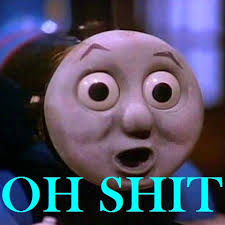 So the fun, fantasy-horror of Axis soldiers transporting the immortal heart of Frankenstein is punctuated by a haunting worm’s-eye view of the Enola Gay flying miles above the city with air raid sirens howling mournfully through the city. Then we see Hiroshima in flames. I still find it a little shocking, especially for a goofy creature feature, but it’s a vital part of the audacious story-telling that makes this movie rule. If you weren’t sure before, this is a pulpy-ass horror movie.
So the fun, fantasy-horror of Axis soldiers transporting the immortal heart of Frankenstein is punctuated by a haunting worm’s-eye view of the Enola Gay flying miles above the city with air raid sirens howling mournfully through the city. Then we see Hiroshima in flames. I still find it a little shocking, especially for a goofy creature feature, but it’s a vital part of the audacious story-telling that makes this movie rule. If you weren’t sure before, this is a pulpy-ass horror movie.

Also there’s this if you weren’t sure. Fun fact: Baragon cannot and does not breathe electricity, but there are multiple promo images like this that depict it. Thanks a lot, Obama.
From there we flash forward to the present day (1966) Hiroshima, in a radiation sickness treatment center. This is when we finally lay eyes on the (human) star of the movie, NICK FUCKIN’ ADAMS
Frankenstein Conquers the world is a co-production between Toho and the now-defunct UPA, an animation studio best known for Mr. Magoo cartoons. After the success of Gojira, Rodan, and Mothra, they must have wanted some of that sweet-ass monster money.
While I don’t have any information to confirm or deny it, it’s not hard to imagine UPA telling Toho “hey let’s get a Hollywood movie star in one of these things!” Or maybe Toho telling UPA “we want our monster movies to appeal to an even wider audience, hook us up with an actor they’ll recognize in the west.” Whatever the case was, it gives us Nick Adams portraying Dr. James Bowen.
First and foremost, Nick commits 150 fuckin’ percent to this crazy movie, and does the same for his star turn in Toho’s Invasion of Astro-Monster (a.k.a Godzilla vs. Monster Zero) which was released the same year. In both movies Nick plays it completely straight, turning in energetic, earnest performances. Nick’s an interesting dude. He had moderate success in the U.S. with his western TV series The Rebel, and earned a best supporting actor Oscar nomination for his role in the courtroom drama Twilight of Honor. Despite that, and his highly publicized friendships with James Dean and Elvis Presley (publicized mostly by himself, apparently), he never quite crossed over into bigtime Mr. Hollywood status.
So considering his status as a “struggling” actor, he not only agreed to star in a pair of Japanese sci-fi spectacles, he threw himself into the roles headfirst and acted his balls off. He immersed himself in the local culture and was a hit with his co-stars. He was remembered fondly by his fellow actors as a team player who engaged in wacky on-set practical jokes and learned all the best Japanese swearwords. He also purportedly had an affair with leading lady Kumi Mizuno.
When you compare that to Russ Tamblyn’s mumbly, half-hearted performance in the otherwise fantastic War of the Gargantuas (Frankenstein’s pseudo-sequel) it’s even easier to appreciate Adams’ work. Not only that, but Tamblyn reportedly was a total weenus who spent as much time as possible holed up in his trailer.

To be fair, the original screenplay describes the male lead as “An American scientist with the most punchable douche-face ever.”
We also meet the other two human leads, fellow doctors Kawaji and Togami. Kawaji is played by Tadao Takashima, who is no stranger to Toho monster mashes, having starred in King Kong vs Godzilla and Son of Godzilla. As in those films, he brings an unassuming everyman quality to the character, which makes the character’s hidden cruel streak that much more surprising. Kumi Mizuno plays Togami, and she’s been in a slew of kaiju creature features in addition to this and the previously mentioned Astro Monster: Matango, Godzilla vs. the Sea Monster, all the way up to 2004’s Godzilla Final Wars. While most female leads in Japanese monster movies tend more towards cute and quirky, Kumi played grown-ass women, if not full on sultry femme fatales.

Any movie star can look good in a fancy dress or a sexy bikini, it takes a special woman to smolder in a wacky-ass spacesuit.
We’re quickly introduced to our titular monster via one of his kills. A herd of screaming schoolchildren trample into their classroom, apparently psyched as fuck to learn fractions. That is, until they spot the surprisingly gory corpse of a chewed up bunny between their desks, which hilariously causes them to stampede out of the room the same way they came in.
Rumors start flying about a feral boy lurking around at night, grabbing and eating cats, dogs, and any small animals he can get his grubby claws on. Dr. Bowen and Togami learn the rumor is true during their super-romantic dinner date:

On their next date Dr. Bowen puts on a stars and stripes apron and barbecues hamburgers. No joke, both scenes are silly and charming.
Along with our heroes, we get our first sort-of look at Frankenstein after he gets hit by a car just outside Togami’s apartment. The car books it out of there, and we see Togami’s nurturing side as she… throws Frankenstein a little bag of sausages? Considering he’s a feral kid in capri pants, I guess that’s better than nothing. Or getting hit by a car.
Later, Bowen and Togami are taking a lovely stroll on the beach when they see a small mob rushing to the seaside cliffs with ladders. Small world, they’re converging on Frankenstein’s cliff-side cave lair! Being kind of nosy fuckers, Bowen and Togami scramble up to get a handle on things. I like that when Togami argues with the cop, Bowen totally has her back, and again she goes straight for compassion. We finally get a really good look at this movie’s Frankenstein, and he is crazy looking:
The forehead piece doesn’t quite match the actor’s skin tone, but the missing tooth and contacts look awesome, and I think it’s a fun take on the creature. They’re clearly borrowing heavily from Boris Karloff’s classic monster, but tweaking it into something new. It looks like what would happen if Frankenstein was born instead of made. The weird vertical wrinkles and vein on his forehead are a good substitute for the traditional wounds and stitches you see on an undead Frankenstein.
So naturally Bowen and Togami take him in because they’re nosy fuckers scientists. As scientists are wont to do in the 60s in Japan, they hold a press conference about the monster they’ve found, and this folks, is how we slowly incorporate a marauding dinosaur into our Japanese Frankenstein movie! We’re getting there!
Remember our World War II submarine captain? Ever wonder what he’s up to in the mid-60s? Well whether you did or not, we find out he’s working at an oil rig. An oil rig that our villain monster, Baragon attacks! The attack scene is among the best miniature work in the movie, which is actually saying a lot considering some of the impressive effects shots that come later. A burrowing monster, Baragon attacks from underground in the middle of the night, during a raging thunderstorm. We’re treated to collapsing oil towers, crumbling buildings, and geysers of oil, and it all looks pretty sick. Everybody thinks it’s a freak earthquake, except when our boy Mr. Sub Captain catches a split-second glimpse of Baragon’s weird face peeking out from a fissure in the earth.

Baragon is not to be confused with the Gamera villain Barugon, which definitely wasn’t a trashy attempt to cash in on Baragon’s strange cult following in Japan.
From here we jump back to the lab with Dr. Bowen, Togami, Kawaji, and our Frankenstein monster, who is continually getting bigger and more monstery. Eventually Frankenstein proves to be too huge and unpredictable to not be chained up and put in a massive cage. At this point he’s about twice as big as a human, and we get some great forced-perspective shots to establish it.
Our buddy the sub captain (Captain Kawai, thank you internet, thinternet) contacts our heroes and tells them about his experience with the Frankenstein heart, and that he suspects that their feral boy is somehow linked to it. Kawaji treks out to Frankfurt, Germany, where he meets an aged version of the crazy mute doc from the movie’s prologue. He speaks now in a suitably wild German accent, and informs Kawaji of how to find out if the kid is a Frankenstein: just lop off an arm or a leg! If he’s a Frankenstein, it’ll grow back! Togami and Bowen are pretty thoroughly not cool with going this route, but Kawaji has other plans.
While Bowen and Togami have their all-American burger date (I told you I wasn’t joking) Kawaji throws back a shot of liquid courage to prep himself for drugging and mutilating the gigantic boy. At his massive size, Frankenstein is getting less human; his laughs and grunts sound unnerving and neanderthal-ish. A TV crew that never saw King Kong shows up to record Kawaji hacking off Frank-parts. Before Kawaji can chop off a limb though, the camera crew pisses Frank off like crazy with their dumb flashing lights. Everybody has a nice “Oh shit” moment as they realize that the chains are way too small for the ever-growing Frank. In his frantic escape, his hand gets shredded off by the shackle that was digging into his wrist, and the camera crew gets crushed to death by the wall Frank brings down.
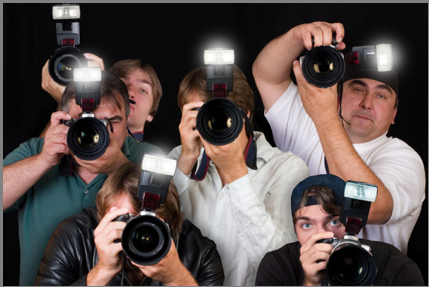
Even the feral, mutated reincarnation of Frankenstein knows the paparazzi are the real soulless monsters.
Bowen’s and Togami’s adorable burger night is interrupted by the news that Frank is breaking out of the lab and that he’s killed people. This allows Nick Adams to awesomely tell Togami that Frankenstein is “NO LONGER A BOY!” Despite his outburst, you know Bowen is still protective of the monster because he flips a shit when he arrives on the scene and sees the cops shooting at Frankenstein. Frankenstein’s escape in general is incredible looking, due mostly to the smaller scale of the monsters. Smaller monsters mean larger, more detailed miniatures. Not only that, but the actor portraying Frankenstein isn’t encumbered by a bulky monster suit, so the gigantic Frankenstein can dash and leap between buildings. It’s one of my favorite images in monster film history. Before he skips town all together Frank rolls up to Togami’s apartment one last time.
Plenty of other monster movies have shots where the creature peers through an upper-level window, but for some reason this one resonates a little more for me. The blue screen work isn’t perfect, but I think Frankenstein’s character is what makes it work so well. Even with the heavy prosthetics, you have a human face that can act and emote, and he’s really just a giant, misunderstood boy.

Giant, misunderstood, and maybe a little dumb. He looks like he would have loved Two and a Half Men.
There’s some really fun panic as all of Japan goes a little bonkers trying to locate the ever-growing Frankenstein. At some point they even ask “If he’s really so big, why can’t you find him?” It’s a question I wish more kaiju movies with elusive monsters would ask themselves. It’s played for laughs in Frankenstein, but seriously, how do you lose a towering mutant monster?
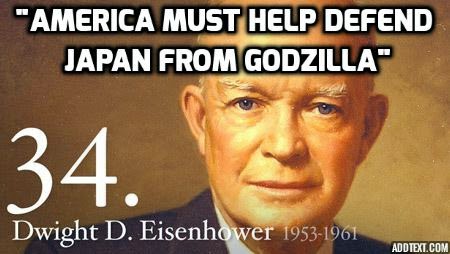
This is what I found when I did a Google image search for “Godzilla hiding.” This is so much better than the joke I originally had in mind. Bless you internet, blinternet.
Frankenstein eventually finds refuge in the woods, and this is where the movie pulls out some of my favorite gags. Yeah I said gags, because as horror-inspired as Frankenstein is, it’s still a giant monster movie that came out after Toho’s comedy adventure King Kong vs Godzilla, and their fantasy Mothra. I think some people assume the Japanese take all their kaiju movies dead serious, but after the bleak atomic nightmare of Gojira and the colorful horror of Rodan, most entries in the genre come with at least a taste of self-aware goofiness. Case in point, in the guise of trying to kill some birds for food, or just being a bored giant caveman-kid, Frankenstein uproots a tree, chucks it at the birds, misses, and we see some bumpkins scramble as the tree crashes down on their hillbilly shack. It’s a terrific sequence of effects shots, it further establishes Frank as a restless kid, and is pretty fuckin’ funny.
We also see Frankenstein dig traps to catch tanks (though they were originally intended to capture a hilariously fake-looking wild boar) and watch over the town in the valley below, just like a kid watching ants scurry around their hill. Frankenstein’s scary looking and a bit of a shit-kicker, but it’s not like he goes around eating people, unlike some monsters in this movie.
Baragon eats a bunch of sexy teens at some party cabins, and poor Frankenstein, who was busy just pullin’ his pud on the other side of the country gets blamed for it! Frankenstein getting wrongfully accused of Baragon’s crimes is a fun, crazy twist that makes me love this movie. The military goes H.A.M. trying to track down Frankenstein, while our heroes desperately try to convince the press that Frank isn’t the culprit. Even Kawaji, who creepily, desperately wants to hack up Frankenstein admits that their monster wouldn’t eat people. Meanwhile, Baragon eats a whole fucking farm.
Baragon’s barnyard buffet has a couple more ridonculous sight gags. After he chows on the chickens, we see tons of feathers fluttering out of his mouth. This is followed by a horse doll freaking out in a stable as Baragon crushes it. Supposedly when asked why they didn’t blue-screen in footage of a real horse instead, the answer was that “wouldn’t be as funny.”
To be fair, I don’t really need to see a horse get realistically terrified and crushed to death. So, thanks? Eventually our heroes catch up with Frankenstein in the wild, and at this point he’s gigantic and wearing a loincloth. He looks like a big awesome prehistoric Robin Williams.
Unfortunately, Kawaji still wants to chop up Frankenstein and put the pieces under a microscope, so he’s brought along a cache of chemical grenades to blind and eventually kill the monster. And let’s face it, the dude’s not that wrong. Frankenstein is the most astounding discovery in the history of modern medical science. Understanding his ability to regenerate, to never die, would change the course of humanity forever. So Kawaji continues on his misguided quest to kill Frankenstein, and shows Togami and Bowen how his bombs work. Which summons Baragon!
All three doctors desperately try to blow Baragon’s ass up with chemical bombs, but it goes just as terribly as you’d think, until Frankenstein rolls in like a bad-ass and saves their butts. He shields Togami from Baragon’s hungry wrath, while debuting a weird new shrieky roar, that sounds like Ultraman noises.
Frankenstein and Baragon finally tussle! Frankenstein is as nimble as ever, able to dodge Baragon’s attacks, and Baragon is surprisingly spry himself, leaping around like a nutcase. One such jump almost crushes Kawaji; I love when monster encounters and battles put human leads in immediate danger, too many of these movies have actors detachedly watching the monster action from a safe distance.
During the fight, we see Baragon use his heat beam on Frankenstein to little effect. Then he blasts the dirt with it to start a new tunnel! In one short, wordless shot we pretty much get a full picture of Baragon’s lifestyle. He evolved a glowing nose horn to help him see in the dark while he burrows, and he evolved a heat beam to help blast apart rock so he can tunnel through it. Lesser monster movies would have stopped dead to give us a boring conference room scene or slide presentation to explain how and why a monster can do what it does. I mentioned in my Gojira review that those can work if they’re handled right, but they so rarely are.
With Baragon on the run, Frankenstein rescues Kawaji from certain death. He returns Kawaji to safety in what is easily the best shot in the entire movie, and one of my favorites from all of monsterdom. His giant feet step out into the dark, winding forest road, towering above Bowen and Kogami. He nods solemnly to them, and gently puts down Kawaji. It is eerie and terrific. Here, more than anywhere else in the movie, this Frankenstein looks and acts like the classic Frankenstein of yore, blown up for the atomic age.
After that quick moment of surprising humanity, Frankenstein is back to fighting Baragon to the death. In a fun subversion of Frankenstein tropes, he starts swinging a giant torch at his dinosaurian opponent, but in the process starts a raging wildfire. Frankenstein and Baragon fighting in front of wall of roaring fire is yet another fantastic image. They body-slam each other and Frank even goes for the classic King Kong-style jawbreaker. But Frankenstein’s radness is just too much for this world to handle. As soon as he claims victory over the corpse of Baragon, the earth crumbles beneath them, sending them tumbling down into their fiery doom.
The reactions from our human cast are bittersweet, while also foreshadowing the possibility of a sequel. They say that Frankenstein cannot die, and that his heart will live forever. But they also say he couldn’t live in this world, “he might be better off now.” The movie really explores a theme director Ishiro Honda visited in many of his monster films. The theme is best summed up with what is likely his most famous quote:
Monsters are tragic beings. They’re born too tall, too strong, too heavy, that is their tragedy.
For all their mayhem and terror, many of the most beloved kaiju are sympathetic, and Frankenstein is a perfect example. It’s a huge part of why these movies resonate with people (and especially kids) the way they do. It’s a topic I’ll definitely discuss more in the future.
But if you think that ending is a bummer, let’s talk about the ridiculous “alternate” ending that has Frankenstein defeating Baragon, only to get taken out by a random giant octopus. A giant octopus that apparently lives in the forest.
Apparently the American co-producers were so ga-ga over the octopus battle in King Kong vs Godzilla, they begged Toho to work in an octopus scene. I can’t say I blame them, as Toho’s giant octopus (a.k.a. Oodaku) always looks awesome. It’s one of their best-looking and moving puppets, and it’s easy to mix with footage of a live octopus. The American co-producers were of course looking for a sea battle for Oodaku, and decided not to use the bizzare forest-octopus ending. They did get their wish the following year, as the terrific War of the Gargantuas opens with Oodaku attacking a ship and battling the green Gargantua.
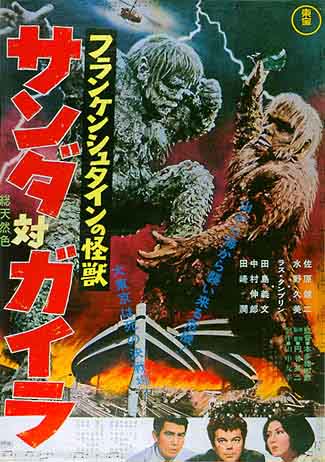
War of the Gargantuas is fucking great. I don’t have a joke for this, the movie just rules. Except for Russ Tamblyn. Blugh.
The alternate ending was completed, and luckily it’s available as an extra on the DVD, along with a few other bonus effects shots. Some of these were used for the international release, and I’m pretty sure some home video releases incorporate these bits. It’s great to see some extra footage of Frank throwing cars and streetlights, but it makes sense to omit them: too many shots like that would muddy up Frankenstein’s more-or-less goodguy persona.
So way way back in that first paragraph, I promised to talk about the origin story for this crazy movie, and the showbiz backstabbery that made it possible. Willis O’Brien, the creator of King Kong (and therefore a founding father for the entire genre) struggled to get work later in his career, despite being one of the most important innovators in special effects and fantasy film. In an attempt to drum up some business, he wrote a story treatment for King Kong vs. Frankenstein, but had no luck securing backing for it. Independent producer and likely slimeball John Beck fucking stole the treatment and sold it to Toho.
Toho of course was in love with the idea of using Frankenstein and King Kong for their own projects. Years earlier, they scripted a movie that would pit Mary Shelley’s famous freak against their own monster, The Human Vapor. This fell through in favor of the King Kong/Frankenstein mashup, though Toho swapped out Frankenstein for their Godzilla. Toho had planned on following King Kong vs. Godzilla with Godzilla vs Frankenstein, but Toho couldn’t get a workable script off the ground in time, so Mothra faced Godzilla next instead.
Toho’s ideas for Frankenstein vs. Godzilla eventually coalesced into Frankenstein Conquers the World, this time Godzilla getting kicked out in favor of the brand new monster Baragon. All this monster shuffling caused a funny domino effect of story bits in other Toho creature features. Why the hell does King Kong have lightning/electricity powers in King Kong vs. Godzilla? Because that was originally written for Frankenstein, a monster powered by lightning and electricity! Why does Godzilla get brought to life by lightning in Godzilla vs. The Sea Monster? Because that was originally written for King Kong, who was given Frank’s electricity powers!
It’s really fitting that Toho’s Frankenstein movie was stitched together from parts of dead projects, and brought to life by their stable of cinematic mad scientists. It’s a total oddball classic that stands with the very best the genre has to offer. Much love for Frank, and even more for his progeny the Gargantuas. Thanks for reading and Happy Halloween!










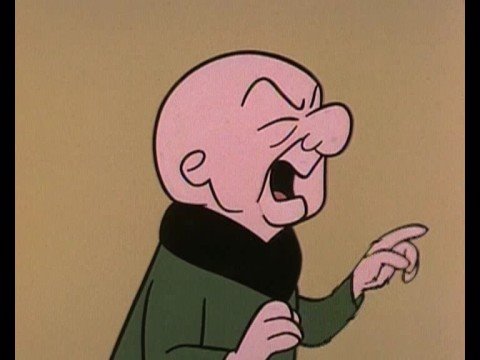







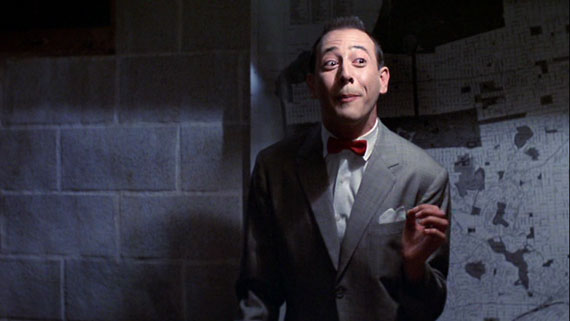







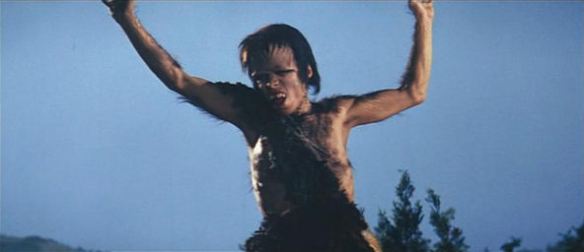
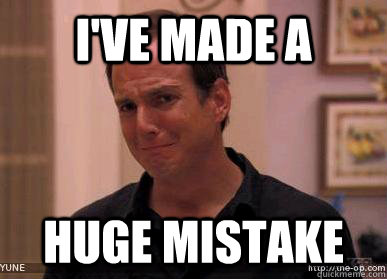
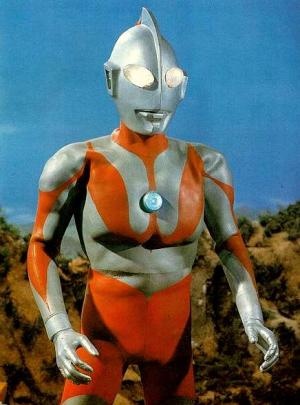



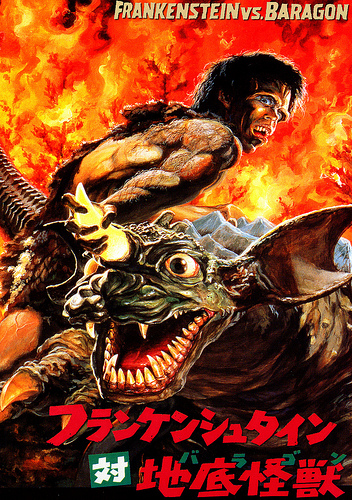
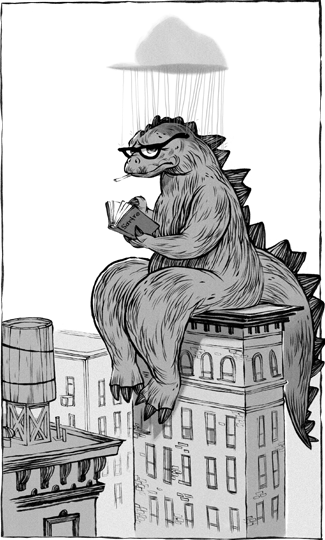
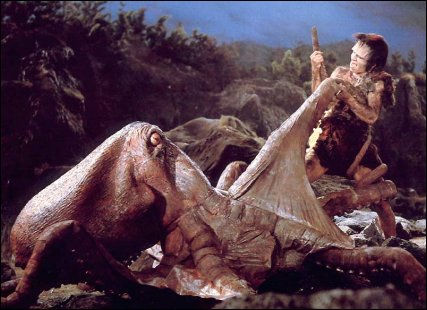


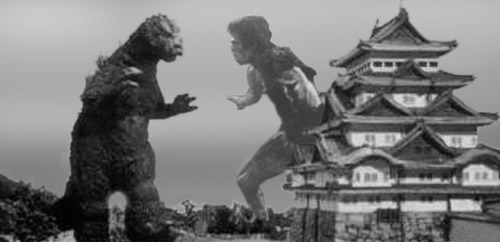
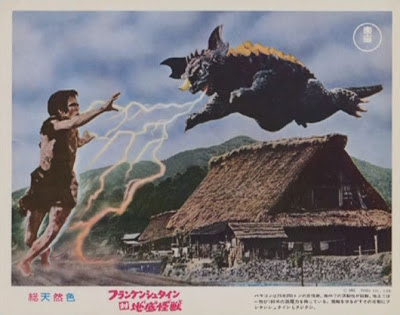
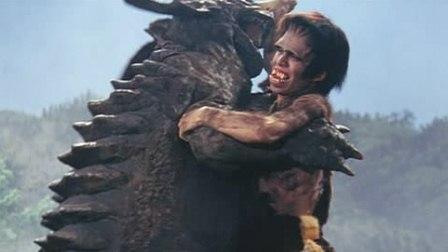
Great post! I’m loving your blog. Your reviews are top-notch, and this one’s a favorite of mine, too. 😀
Glad you dig it, thanks for reading! Can’t go wrong with a giant atomic Frankenstein!
Pingback: Step aside Superman! Move along Mega Man! Ultraman is!… ultra… here? (Part 1 of ???) | MONSTERS CONQUER THE WORLD
Pingback: Ultraman Review Part 3 of ¯_(ツ)_/¯ Episodes 6 & 7 | MONSTERS CONQUER THE WORLD
Actually the “Ultraman Roar” that you hear so much in the original series actually originates from the 1958 movie “Varan The Unbelievable”. It was a combination of the 1954 Godzilla roar and a rare, one-off sound that Rodan made in his original movie. I guess the people over at Toho must of liked it a lot because they went on to use it for Baragon in this movie, and Gorosaurus from King Kong Escapes; also not to mention for Neronga, Ragon, Chandora, Magular, and Aboras in the original Ultraman and countless other times in future Ultra series’. Have a listen why dont’cha?
Oh and here’s the samples that they used.
Whoa, awesome! Roars get modified and re-used so often that I lose track of them unless they’re really distinct or iconic (Godzilla, Gamera, and Ghidorah’s sounds are always easy for me to place). It’s super cool to hear exactly where they come from!
Glad I can be of service. Ever need useless, nerdy trivia regarding toku of all sorts, then I’m the virg- guy to call… or just look it up, whatever suits ya.